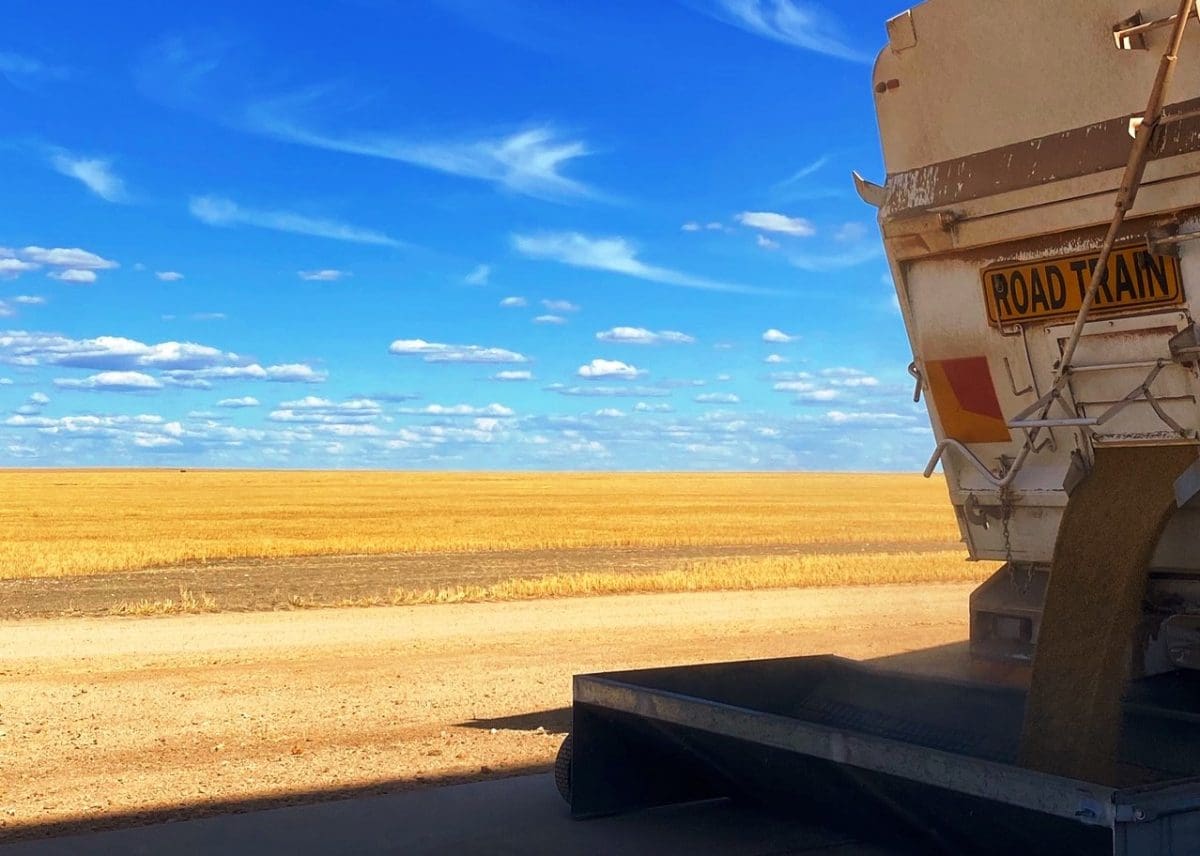
Harvesting and transferring Lancer wheat at Billa Billa north of Goondiwindi. Photo: Pacific Seeds
BARLEY in southern markets has come under supply-side pressure this week, while northern markets have firmed a little as logistics challenges counter the impact of whopping tonnages rolling into storage sites.
Bulk handlers in north-west New South Wales have been out-turning grain to trains running into Newcastle ahead of the first ships arriving in the next two weeks to start loading new-crop grain.
The challenge for operators will be to keep the supply chain to export moving so bulk handlers can keep receiving grain at all up-country sites.
These are filling quickly as growers look to warehouse or sell what they cannot store on-farm, and some trucks are encountering considerable wait-times at sites on the plains.
| This week | Last week | Change | |
| Barley Downs Nov | $262 | $258 | Up |
| Barley Downs Jan | $258 | $255 | Up |
| Barley Melbourne Nov | $245 | $250 | Down |
| Barley Melbourne Jan | $240 | $245 | Down |
| Wheat Downs Nov | $307 | $305 | Up |
| Wheat Downs Jan | $300 | $305 | Down |
| Wheat Melbourne Nov | $345 | $350 | Down |
| Wheat Melbourne Jan | $305 | $305 | Steady |
| Sorghum Downs Nov | NQ | $350 | NA |
| Sorghum Downs Mar-Apr | NQ | $310 | NA |
Table 1: Indicative delivered grain prices in AUD per tonne.
Harvest rolls south
Harvest in southern Queensland is now all but over, and most NSW growers within 100 kilometres of the Queensland border are in the final third of their harvest, while others have finished.
Most growers in NSW and Victoria have applied large amounts of urea to wheat crops, and they are delivering high yields and high protein.
“People thought yields would knock protein down; so far, it hasn’t,” Wilken Group trader Andrew Kelso said.
Light rain in Victoria in recent days has slowed or stopped harvest, and has minimised price falls seen this week.
Some consumers are scrambling for small tonnages, which has also been supportive.
Mr Kelso said the stronger Australian dollar appeared to have had its biggest impact on barley.
“The weakest market seems to be barley.”
Quality mostly high
Reports of some early deliveries of barley with high screenings and light testweights as the result of frost, and some discolouration because of late rain, are filtering through in the market.
In the northern market, sources are reporting the opposite as its harvest winds up.
“We’re getting testweights of 68-72 hectolitres per kilogram for barley when we normally expect 63-65, and wheat is 13 per cent protein and 82-83kg,” one source in the feedlot sector said.
“The quality’s amazing this year.”
Limited quantities of weather-damaged feed wheat are available on farm in northern NSW at around $240-$250/t and meeting reasonable demand from feed manufacturers and the poultry and pig sectors.
Barley remains the preferred grain for northern feedlotters, who are generally covered into January from local grain, and prepared to sit out of the market until supply-side pressure from harvest in Victoria and southern NSW comes to bear.
Agracom export manager Brett Donoghue said the premium for high-protein wheat remained eroded now that domestic millers and export accumulators were comfortable with their coverage.
“The quality profile of the crop is so high it’s surprised everyone,” he said.
Mr Donoghue said container business was helping to absorb some of the tonnage.
“There’s great demand for high-protein wheat into Asia.”
Logistics for containers as well as bulk is an issue, albeit a manageable one at this stage.
In GrainCorp’s presentation today accompanying its FY20 results, the company said its receivals in the harvest to date had hit 3.9 million tonnes, with daily receivals now at around 300,000t.
Sources report road and rail freight is already at a premium in NSW, and harvest in southern NSW is yet to hit its straps.
“With a large crop, everything’s at capacity.”
The Liverpool Plains is the last region of northern NSW to harvest its grain, and Mr Donoghue said most of its growers had finished their barley harvest, and were now on to wheat.
Grain Central: Get our free daily cropping news straight to your inbox – Click here

HAVE YOUR SAY